Treatment cost
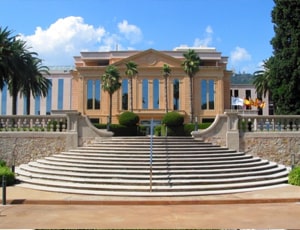
Apart from in-detail treatment procedures available, Centro Medico Teknon located in Barcelona, Spain has a wide variety of facilities available for International Patients. Some of the facilities which are provided by them are Accommodation, Airport Transfer, Choice of Meals, Interpreter, SIM, TV inside room. Also listed below are some of the most prominent infrastructural details:
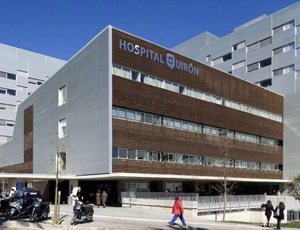
Apart from in-detail treatment procedures available, Hospital Quirnsalud Barcelona located in Barcelona, Spain has a wide variety of facilities available for International Patients. Some of the facilities which are provided by them are Accommodation, Airport Transfer, Choice of Meals, Interpreter, SIM, TV inside room. Also listed below are some of the most prominent infrastructural details:
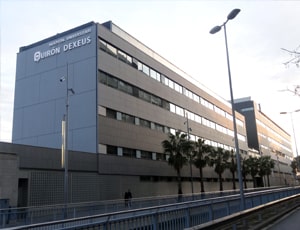
Apart from in-detail treatment procedures available, Dexeus University Hospital located in Barcelona, Spain has a wide variety of facilities available for International Patients. Some of the facilities which are provided by them are Accommodation, Airport Transfer, Choice of Meals, Interpreter, SIM, TV inside room. Also listed below are some of the most prominent infrastructural details:

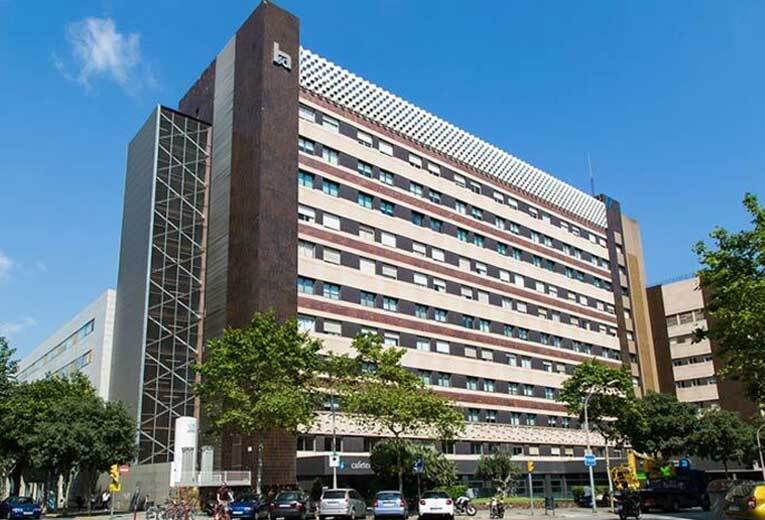
The Hospital is an amalgamation of a group of buildings located in the Eixample Left of Barcelona, ??between Paris, Viladomat, and London streets. It has a capacity of 350 adjustable beds and first-class hotel-like services inpatient rooms. Currently, it has a workforce of about 1100 Healthcare Professionals.
In order to treat patients with intensive care, the Hospital has 10 beds in its ICU for critically ill patients.
The Hospital has launched a few more things to improve customers’ services- 4 new Operating Rooms and a New Diagnostic Imaging Service.
Other Services
Types of Room
Double Rooms, Double Rooms for Individual Use, and Single Rooms; equipped with an easy-to-use electrical movement control system and a nursing call/warning system, located at the head of the bed, a sofa-bed for the companion, and a bathroom with a shower. They are also equipped with television and telephone.
A cafeteria/Restaurant is also available for the patients or visitors.
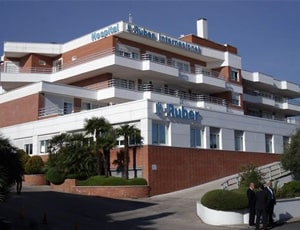
The Hospital has a wide architectural structure that consists of-
With about 80,000 m 2 , it is equipped with the highest sanitary technology and offers a wide portfolio of services-
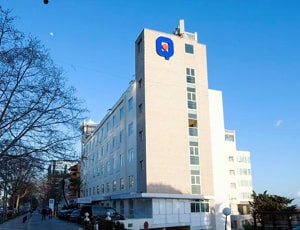
Apart from in-detail treatment procedures available, Quironsalud Marbella Hospital located in Marbella, Spain has a wide variety of facilities available for International Patients. Some of the facilities which are provided by them are Accommodation, Airport Transfer, Choice of Meals, Interpreter, SIM, TV inside room. Also listed below are some of the most prominent infrastructural details:
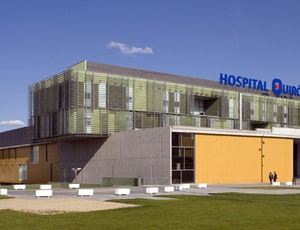
Apart from in-detail treatment procedures available, University Hospital Quironsalud Madrid located in Madrid, Spain has a wide variety of facilities available for International Patients. Some of the facilities which are provided by them are Accommodation, Airport Transfer, Choice of Meals, Interpreter, SIM, TV inside room. Also listed below are some of the most prominent infrastructural details:
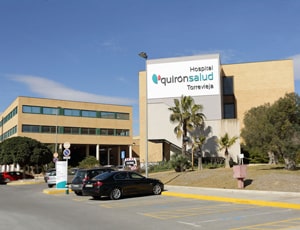
Quironsalud Torrevieja Hospital located in Torrevieja (Alicante), Spain is accredited by ISO. Also listed below are some of the most prominent infrastructural details:
Most physicians advise their patients to undergo the angiogram procedure (also known as angiography and arteriogram) when certain symptoms such as a heart attack or chest pain become a source of worry. A stress test is performed on patients who report chest pain, which is then followed by an angiogram test.
Angiography procedure aims at testing the blockages in the coronary arteries apart from any other cardiovascular-related ailments. Angiography and angiogram procedure can both locate narrowing arteries or blockages that may exist in different parts of the body.
Angiography is recommended for patients with coronary heart diseases (CHD), which can cause the heartbeat to stop suddenly and abruptly. The patient may also suffer from severe chest pain. Angiography can also be performed on patients on an emergency basis when they experience a heart attack. If the blockage is not treated immediately, then healthy tissues around the heart start perishing and turn into scar tissue. It can give rise to several long-lasting problems. Angiography may also be required in the case of a patient with aortic stenosis or those who have had an abnormal heart stress test.
The procedure involves administering a sedative for relaxation. An intravenous line is inserted into the vein. This is just a precautionary step to ensure that medication can be provided or blood products can be given in case of unwanted complications that take place during the angiography procedure.
The patient is kept under close observation for at least 6 to 12 hours if the procedure is performed on an outpatient basis. In case of a femoral artery puncture, the leg is almost kept immobile during the observation period.
Blood pressure and other vital signs are continuously monitored. A cold pack is applied to reduce swelling in the area of puncture and medications are given in case of extreme discomfort.
Hematoma may develop in a few patients. This indicates continuous bleeding from the puncture site and has to be watched for. Two to three days of complete rest is advised and driving should be avoided in the case of patients who have had fluorescein angiography. Direct exposure to sunlight should be avoided for at least 12 hours.
Ask your healthcare adviser for the best multiple options and choose the one that meets your expectations
Angiography (Including Non-Ionic Contrast) package cost in Barcelona has different inclusions and exclusions. The Angiography (Including Non-Ionic Contrast) package cost usually includes all the expenses related to pre and post surgery expenses of the patient. The treatment cost usually includes the expenses related to hospitalization, surgery, nursing, medicines, and anesthesia. A prolonged hospital stay due to delayed recovery, new diagnosis and complications after surgery may increase the cost of Angiography (Including Non-Ionic Contrast) in Barcelona.
Angiography (Including Non-Ionic Contrast) in Barcelona is offered by multiple hospitals across the country. Some of the most renowned hospitals for Angiography (Including Non-Ionic Contrast) in Barcelona include the following:
After discharge from the hospital, the patient has to stay for another 2 days in the country for complete recovery. This duration of stay is recommended to complete all the necessary follow-ups and control tests to ensure that the surgery was successful.
Barcelona is undoubtedly one of the best cities for Angiography (Including Non-Ionic Contrast) in the world. It offers the best medical expertise and good patient experience at an affordable cost. However, there are other cities as mentioned below that are popular for Angiography (Including Non-Ionic Contrast) as well:
Apart from the cost of Angiography (Including Non-Ionic Contrast), the patient is also required to pay additionally for daily meals and guest house accommodation. These are the charges for daily meals and accommodation outside the hospital. The per day cost in this case may range from 45 USD.
After the Angiography (Including Non-Ionic Contrast) surgery takes place, the average duration of stay at the hospital is about 1 Days. This phase is important to ensure that the patient is recovering well and is clinically stable. During this time, several tests are performed before the patient is deemed suitable for discharge.
There are about 4 Hospitals in Barcelona that offer Angiography (Including Non-Ionic Contrast) to international patients. These hospitals are approved to perform the surgery and have proper infrastructure to handle Angiography (Including Non-Ionic Contrast) patients. Apart from good services, the hospitals are known to follow all standard and legal guidelines as dictated by the local medical affairs body or organization.
Some of the most sought after doctors for Angiography (Including Non-Ionic Contrast) in Barcelona are: